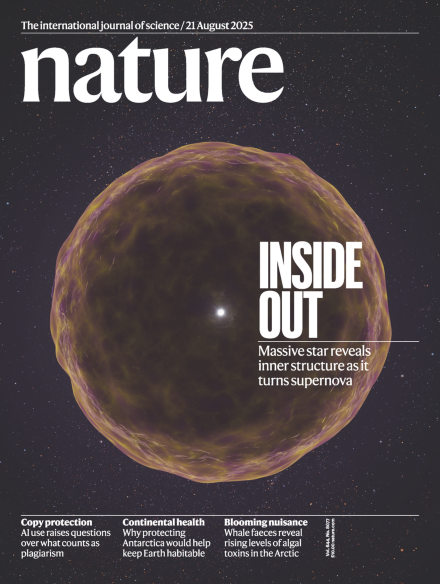An international team of scientists, led by Northwestern University astrophysicists, has detected a never-before-seen type of exploding star, or supernova, that is rich with silicon, sulfur and argon.
When massive stars explode, astrophysicists typically find strong signatures of light elements, such as hydrogen and helium. But the newly discovered supernova, dubbed SN2021yfj, displayed a startling different chemical signature.
Astronomers long have theorized that massive stars have a layered structure, similar to an onion. The outermost layers predominantly comprise the lightest elements. As the layers move inward, the elements become heavier and heavier until reaching the innermost iron core.
The observations of SN2021yfj suggest the massive star somehow lost its outer hydrogen, helium and carbon layers — exposing the inner silicon and sulfur-rich layers — before exploding. This finding offers direct evidence of the long-theorized inner layered structure of stellar giants and provides an unprecedented glimpse inside a massive star’s deep interior — moments before its explosive death.
The study was published today (Aug. 20) in the journal Nature.
“This is the first time we have seen a star that was essentially stripped to the bone,” said Northwestern’s Steve Schulze, who led the study. “It shows us how stars are structured and proves that stars can lose a lot of material before they explode. Not only can they lose their outermost layers, but they can be completely stripped all the way down and still produce a brilliant explosion that we can observe from very, very far distances.”
“This event quite literally looks like nothing anyone has ever seen before,” added Northwestern’s Adam Miller, a senior author on the study. “It was almost so weird that we thought maybe we didn’t observe the correct object. This star is telling us that our ideas and theories for how stars evolve are too narrow. It’s not that our textbooks are incorrect, but they clearly do not fully capture everything produced in nature. There must be more exotic pathways for a massive star to end its life that we hadn’t considered.”
An expert on astronomy’s most extreme transient objects, Schulze is a research associate at Northwestern’s Center for Interdisciplinary Exploration and Research in Astrophysics (CIERA). Miller is an assistant professor of physics and astronomy at Northwestern’s Weinberg College of Arts and Sciences and a leading member of CIERA and the NSF-Simons AI Institute for the Sky.
Read the full Northwestern Now article.
Media Roundup:

